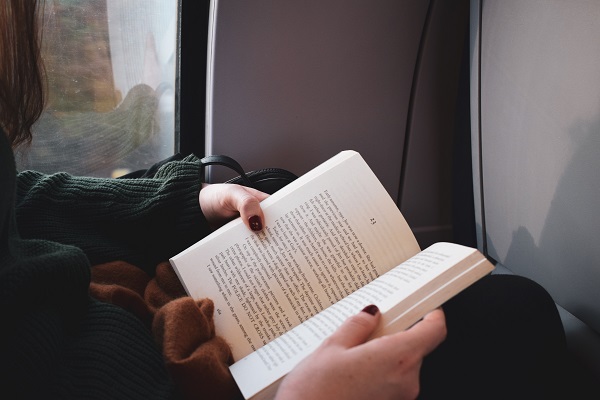There are many great ways to start a story.
Depending on the genre, you might begin mysteriously and gradually build to a climax. Or you might start with an image or description to orient the reader in the story’s setting.
Whatever you choose, it needs to engage your reader immediately and encourage them to keep turning pages.
Let’s take a look at some exciting ways to start a story. Who knows? You may become inspired to write the next bestseller!
Before You Start Writing
Most of the time, you need to have an idea of your key story elements before you can write the opening lines.
To avoid wasting time or writing yourself into a corner, it’s wise to have at least a rough idea of what your characters are like and what the plot will involve.
Sound plot and character development are essential in every story, so try to have their foundations in place before you begin.
Know Your Characters
Try to get to know your characters a little before you start writing.
Who is your main character (or characters)? What will they accomplish during the novel? How might they grow and change throughout the story?
Who are the supporting characters? How will they contribute to the story?
When you know who your characters are, you’ll have a better idea of how you want to begin (and continue) the story.
Plan Your Plot
A good novel also has an interesting, well-paced, believable plot.
Whether you’re a plotter, a pantser or somewhere in between, you need to have at least some idea of what your plot will entail before you dive in to write.
You also need to be ready to move the plot along quickly through your opening sequence, or your reader will not be interested in continuing with your book.
Think of any good movie or TV show that jumps right into the plot before the opening credits roll. A lead-in scene often throws viewers directly into the story by creating mystery or questions.
Without an idea of the overarching plot, you’ll find it hard to come up with such a compelling opening scene.
Idea #1: Create a Hook
A great way to start a story is to draw the reader in with a hook – something that will create intrigue.
‘I’ve often wondered what happened to Steve – did he find the pot of gold at the end of the rainbow?’
Now you’re wondering what happened to Steve as well, and you want to know why he thought he could find that elusive pot of gold.
You’re also wondering what happened before the above musing, and how it all started.
Beginning your novel with a hook encourages the reader to keep reading, if only to find the answers to the questions the first sentence created.

Idea #2: Start with Dialogue
You might have seen advice about never starting a novel with a dialogue opening. But in certain cases it works, such as when you want to introduce a character quickly without a lot of explanation.
‘”Mistakes are a part of life,” she told me, “but what you did this time is inexcusable!”‘
Dialogue at the beginning of a novel can potentially confuse the reader, as the characters are not yet known, nor is the situation.
But this particular dialogue shows readers that the story starts in a place of conflict, inviting them to read on to find out how a simple mistake went too far.
Dialogue that introduces your plot without explanation can entice your reader to discover the story behind it.
Idea #3: Ask a Question
Questions are a great way to open a novel, especially when the answer (and the story that follows) could go in many different directions.
A questioning beginning has the effect of appealing directly to the reader. If they want to find out more, they have no choice but to read on.
‘What would you do if you knew the exact moment you would die?’
The story that comes after such a question is bound to contain surprising twists and turns.
Dealing with a universal subject such as death, it also suggests that the story will take the reader on an emotional roller coaster until the end.
Idea #4: Write Something Unexpected
‘I never knew the impact of the purple pen until it exploded in my face.’
Starting your novel with an unexpected statement takes your reader off guard and makes them wonder how your character got to this point.
The unexpected can create a sense of mystery and suspense. It can also subvert readers’ expectations.
Think about how people might expect the story to start, then surprise them by taking it in another direction entirely.
Once you have them in your grasp with the unexpected, they’ll be more invested in continuing the story.
Idea #5: Begin with an Action Sequence
Action creates excitement and propels your novel forward. Starting with an action scene can be dangerous, though, as you might leave yourself nowhere to go.
You don’t want to have a big action scene at the beginning that overshadows the rest of the story.
An action sequence should lead to the story, but not take away from the big showdown later.
‘Her heart in her throat, she sat in the car, watching the men frantically searching for a way in. She fumbled with a phone hastily sending a one-word text to her husband: HELP.’
This kind of opening sets the scene and creates a future segue into more significant action.
When the woman’s husband comes out, he will inevitably have a showdown with the men harassing the woman. But why are they in that situation? How will they get out of it? What other action scenes will happen?
Start small, build suspense and add more action as you get closer to the showdown.

Idea #6: One-Word Sentences
‘Run.’
A one-word sentence like this piece of dialogue will send chills down most people’s spines and implies so much with a single word. Who is running, and why?
The sentence creates mystery and intrigue. You don’t know why someone is telling another person to run.
Are authorities working to uncover a crime syndicate? Is someone coming to kill the main character?
It sets up an intense scene that propels the reader forward.
Idea #7: Start with Something Unusual
A random or unusual opening immediately catches a reader’s attention, setting your writing and story apart as something unique.
‘The light did not flicker; she did.’
This opening makes you do a double-take. ‘What does that mean?’ you wonder.
It’s the beginning of what promises to be an unusual story, making your reader take note and read on to find out what you meant.
It could be the beginning of a supernatural story where a girl disappears and reappears every time a light switch is flicked. Or it could just be a metaphor.
No one knows until they read further. An ambiguous opening has so many possibilities.
But remember: unusual turns of phrase throughout a book can be confusing to the reader, so don’t overdo the experimental language.
Idea #8: Write an Intense Opening
Intense doesn’t mean you have to start with something showy or spectacular, like a car going off a cliff in a fiery explosion.
Rather than beginning the story in the thick of the action, you can start in the aftermath. Think of a smoldering fire that is barely burning, but still red-hot.
“Ashes rained from the sky for days. Not a single sign of vegetation remained, and we were hungry – no, starving for any morsel of food.”
This opening to what might be a firsthand account of surviving a volcanic eruption is intense enough to propel readers to find out more.
It describes the consequences of what has happened rather than the event itself, leading into what promises to be a compelling post-apocalyptic narrative.
Idea #9: Establish a Genre-Appropriate Atmosphere
The opening of a novel should create the atmosphere you want for your readers.
“The moment we stepped into the room, the putrid smell of death assaulted our senses.”
Immediately, you know that something terrible has happened, and what follows will most likely involve bone-chilling horror or intriguing mystery.
Or perhaps you’re writing an adventure novel, and need to evoke the thrills and dangers of seeking hidden treasure in your first sentence:
“As we entered what we thought was the treasure chamber, we discovered that we had been given the wrong map.”
The above begs several questions: who gave them the wrong map and why? What treasure were they seeking, and where have they found themselves instead?

Idea #10: Start in the Middle of a Scene
Many good stories start in the middle of the scene for a good reason: it generates momentum right from the start, so you don’t lose your reader before the conflict begins.
“Police cars barricaded the street. Ambulances and fire trucks raced to the scene. The house was surrounded, and yet… nothing. No communication. No one knew if the hostages were alive or dead.”
Starting in the middle of a scene drops readers right into the exciting part, giving them questions they want to read on to answer.
Readers want to know who is being held hostage, who is holding them, why they aren’t communicating, and how the situation will be resolved.
Rather than starting with a long lead-up to this key scene, readers get to delve right in, gleaning details along the way.
Idea #11: Disorient the Reader
Another great way to start a story is to disorient your readers. Throw them off-balance and make them re-read the opening lines more than once.
A great example is from George Orwell’s Nineteen Eighty-Four:
“It was a bright cold day in April, and the clocks were striking thirteen.”
The clocks striking thirteen creates a sense of something not quite right, suggesting to readers that an intriguing world unlike our own lies beyond this first sentence.
To add further impact, introduce plot twists later in the story that make readers reevaluate the book’s opening words.
They’ll return to that section in amazement to understand what just happened and how their expectations were subverted.
Idea #12: Mysterious Beginnings
There’s nothing better to start a novel than with a puzzle for your readers to solve.
Starting with a mysterious beginning or an unanswered question gives readers a chance to mull it over and meditate on it before it’s answered later in your novel.
“The door was never opened, yet everything was out of place. Someone had been here, but who?”
The above example raises all the important questions: Who, What, Where, When, and Why (plus the bonus question: How). You’ll have the rest of the novel to delve into the answers.
Who went into the house? What were they looking for? How did they get in if the door was never opened?
The underlying feeling of a mysterious opening sequence is tension and foreboding, which lends itself particularly well to a crime novel or a murder mystery.
Idea #13: Prologue with Purpose
Often, starting a novel with an explanation or precursor to the main events can discourage your audience.
But if you do it right, writing a prologue can create suspense that keeps your audience’s attention.
For example, if you start with a chase scene where the protagonist searches for a hidden doorway but is murdered before he finds it, you’ve placed the driving force of your story in centre stage.
The most common prologues provide context for the main story through a past event. Once this is in place, you are free to flesh out the story, exploring why it happened and its consequences.

Idea #14: A Startling Start
Starting your story with a dangerous element, like many opening scenes in James Bond movies, can startle the reader into continuing.
“As soon as she sat down in his car, she knew she made a disastrous mistake.”
Now you want to know who she is, who she’s in the car with, and what mistake she made. There is an element of danger that must be addressed.
“It seemed the cat grew five inches overnight – five-inch teeth, that is.”
What?! The question of why a cat’s teeth grew into fangs overnight makes people sit up and take notice. No one expects that to happen to their cute, cuddly pet!
This could be the start to a supernatural novel, a horror novel, or even a children’s book.
The story that follows will differ, but the startling, intriguing opening element works just the same.
Idea #15: Use a Strong Narrative Voice
“Let’s get one thing straight: Holmes was a businessman. A dishonest, murdering bastard, but a businessman nonetheless.”
Immediately establishing a strong, engaging narrative voice is a surefire way to get readers invested in your novel.
If their attention is caught by the character’s voice and the style of writing, they’re much more likely to connect with the book and read on.
***
There are hundreds of ways to start a novel. Your imagination is the only limit! The ideas above are simply prompts to help get your creativity flowing.
The important thing to remember is that your opening sequence must draw the audience in from its very first words. How exactly you achieve this is up to you.